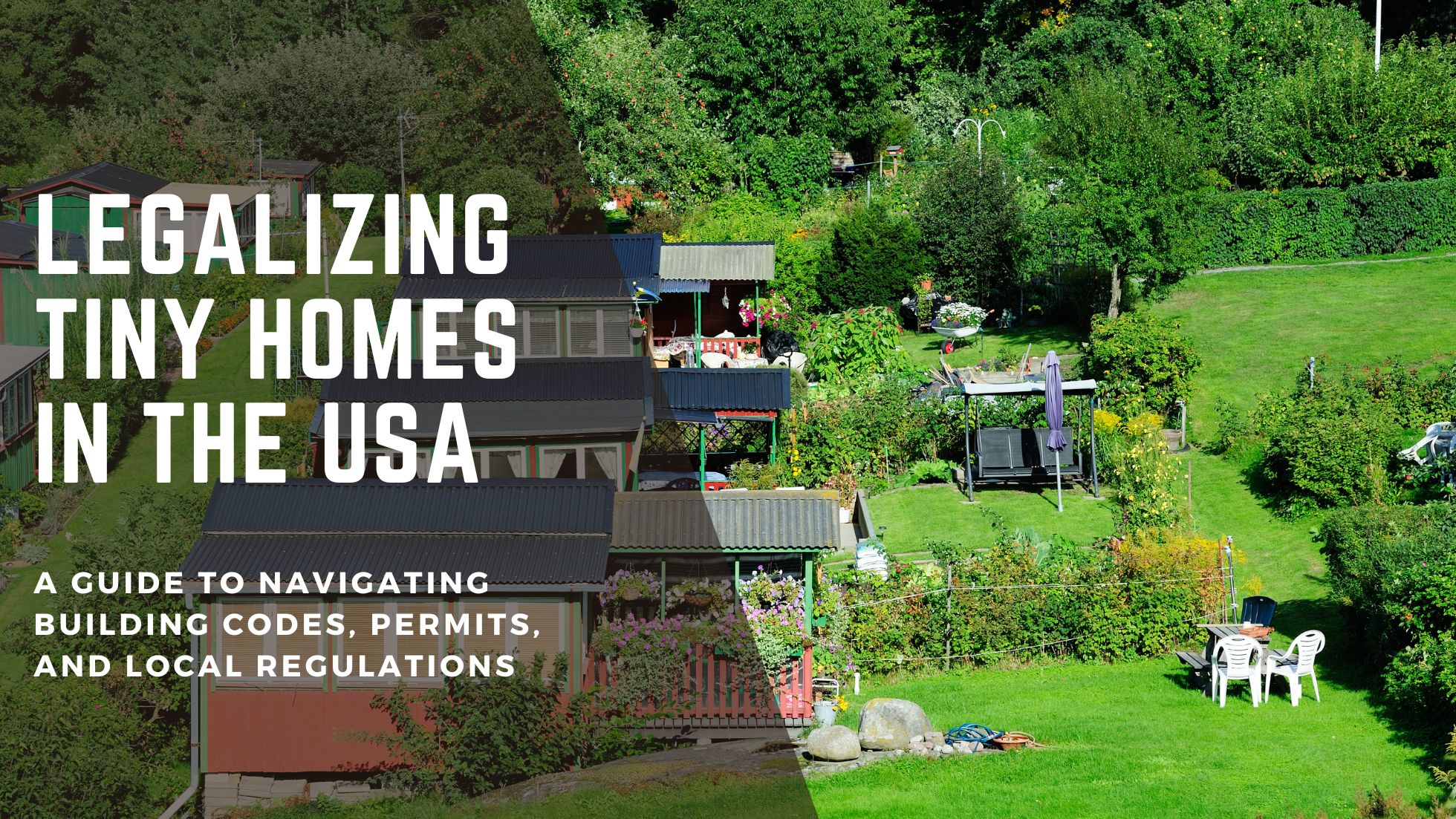
As appealing as tiny living is, one big obstacle stands in the way: legal restrictions. For many aspiring tiny homeowners, navigating the complexities of regulations, zoning laws, and building standards can be overwhelming. This guide is here to help you understand the key steps for legalizing a tiny home in the U.S. and connect you with useful resources and government organizations that can provide support along the way.
Understanding the Regulatory Landscape
The first step toward legalizing a tiny home is understanding the various types of regulations that might apply. Tiny homes typically fall under one of three categories, each with its own legal considerations:
- Tiny Homes on Wheels (THOW): These are considered Recreational Vehicles (RVs) in many areas, making them legal to live in temporarily but not as a permanent residence. Some municipalities are beginning to allow full-time occupancy of THOWs under certain conditions.
- Foundation-Built Tiny Homes: These are constructed on a permanent foundation and must comply with local building codes and zoning ordinances. Localities may have minimum square footage requirements for homes, which can complicate matters for tiny homes.
- Accessory Dwelling Units (ADUs): ADUs are often built on the same property as a larger, primary residence. Many cities are updating their codes to permit ADUs as part of efforts to increase affordable housing options.
Each category comes with distinct advantages and restrictions, and local zoning and building codes often determine how your tiny home can be legally occupied.
Building Codes and Zoning Ordinances
Building Codes establish minimum standards for constructing safe and livable spaces, covering everything from structural stability to plumbing and electrical requirements. These codes vary by state and even by county or municipality. In most cases, tiny homes are required to meet the same standards as larger homes, which can be challenging for compact spaces.
Zoning Ordinances determine where different types of homes can be located. Many zoning codes restrict the minimum square footage of a home or impose other limitations that make tiny homes difficult to place legally. The good news is that, in recent years, some cities have amended zoning laws to allow tiny homes on both residential and rural properties. For instance, California has made significant strides in permitting ADUs and tiny homes in certain urban areas.
The Permit Process
After reviewing local building codes and zoning requirements, the next step is obtaining the necessary permits. Here’s a basic overview of the steps involved:
- Contact Local Government Officials: Start by reaching out to your local building department. They can provide information on what’s required in your area and may even have specific guidelines for tiny homes or ADUs.
- Submit Plans for Approval: You’ll need to submit a set of detailed construction plans that demonstrate your tiny home meets local building codes. This process can take some time, especially if your plans need to be revised to comply with certain codes.
- Schedule Inspections: Once construction begins, the building department will likely require inspections at different stages, such as foundation, plumbing, and electrical work.
- Final Inspection and Approval: After all inspections are complete, the building department will conduct a final review. Once your home passes, it will be considered a legal dwelling.
Some municipalities may even waive specific requirements for tiny homes or offer incentives for building ADUs to increase affordable housing.
Advocating for Tiny Home Legislation
If your area doesn’t currently allow tiny homes, you’re not alone—many tiny home advocates have successfully worked with local governments to create change. Advocacy efforts often focus on highlighting the benefits of tiny homes, such as their affordability, low environmental impact, and potential to ease housing shortages. Here’s how to get involved in advocating for change:
- Form a Local Tiny Home Group: Connecting with like-minded individuals can provide support and amplify your voice when approaching local officials.
- Attend Zoning and Planning Meetings: These meetings are open to the public and are an excellent opportunity to speak about the benefits of tiny homes directly to policymakers.
- Propose Changes to Local Zoning Codes: Some cities have specific procedures for requesting changes to zoning laws. Often, this involves submitting a proposal that outlines the proposed changes and explains their benefits.
- Work with Government Organizations: Agencies like the U.S. Department of Housing and Urban Development (HUD) and state housing departments are increasingly interested in housing innovation. They may offer guidance on ADU development or grants to support affordable housing solutions, including tiny homes. You can find resources on the HUD website and locate regional contacts to learn more about potential support.
Resources for Tiny Home Legalization
Below are some resources that can help you navigate the process of legalizing a tiny home:
- HUD: As mentioned, HUD offers valuable resources and sometimes grants for affordable housing projects, including ADUs and tiny homes.
- American Tiny House Association (ATHA): ATHA provides advocacy resources and can help you connect with local representatives working on tiny home legalization in your area. Learn more at the ATHA website.
- Local Building and Zoning Departments: Each city or county has its own building and zoning department. They are an essential resource for obtaining up-to-date information on building codes, permits, and legal requirements.
Final Thoughts
The path to legalizing a tiny home in the U.S. may be challenging, but as the movement grows, more jurisdictions are recognizing tiny homes as a viable and beneficial housing solution. You can help bring tiny home living from a dream to a legal reality by understanding building codes, navigating the permit process, and advocating for policy changes. For those passionate about tiny living, taking proactive steps and working with local officials can pave the way for a brighter—and more compact—future in housing.
For more information on zoning codes and building requirements, check out our article, “Zoning Laws and Building Codes: What You Need to Know Before Building a Tiny Home.”
